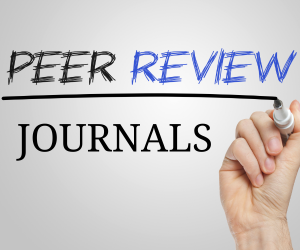PERIOPERATIVE DIABETIC KETOACIDOSIS ASSOCIATED WITH SODIUMGLUCOSE CO-TRANSPORTER-2 INHIBITORS : A SYSTEMATIC REVIEW
DOI:
https://doi.org/10.53555/nnmhs.v9i6.1723Keywords:
Diabetic ketoacidosis, Diabetes mellitus, Sodium-glucose co-transporter-2 inhibitors, SurgeryAbstract
DKA or diabetic ketoacidosis is an emergency condition caused by hyperglycemia in which excessive acid is produced in the blood. Patients with type 1 and type 2 diabetes who undergo surgery, have an infection, or are under extreme stress can also develop DKA. The body generates the hormone adrenaline to combat infection and stress, but this can have a negative effect on blood glucose levels (adrenaline is counterinsulin). This can worsen if the patient refuses to take diabetes medication or inject insulin during stressful or infectious situations. The fundamental components of the pathophysiological mechanisms at play in diabetic ketoacidosis (DKA) include shifts in hormone levels and the ensuing inflammatory response. Alterations in the concentration of hormones lead to shifts in the production and consumption of glucose, as well as an increase in lipolysis and the formation of ketone bodies. Canagliflozin, dapagliflozin, empagliflozin, and ertugliflozin are agents approved by the Food and Drug Administration (FDA) for the treatment of type 2 diabetes mellitus (DM) in adults. Acting on proteins, the four agents are SGLT2 inhibitor class agents. SGLT-2 is expressed in the kidney's proximal tubule. This may result in a decrease in filtered glucose reabsorption, a decrease in the renal threshold for glucose (RTG), and an increase in glucose excretion via urine. Diabetes patients treated with sodium–glucose transport protein 2 (SGLT2) inhibitors have also been reported to experience DKA. The results of a study indicate that DKA is uncommon among T2DM patients treated with SGLT2 inhibitors.
References
International Diabetes Federation. Diabetes. Brussels: IDF; 2017.
Evans K. Diabetic ketoacidosis: update on management. Clin Med. 2019 Sep;19(5):396–8.
Association AD. 15. Diabetes Care in the Hospital: Standards of Medical Care in Diabetes—2019. Diabetes Care
[Internet] 2018 Dec 7;42(Supplement_1):S173–81. Available from: https://doi.org/10.2337/dc19-S015
American Diabetes Association. Diagnosis and Classification of Diabetes Mellitus. Diabetes Care. 2016;62–9.
Fauci AS, Jameson JL, Kasper D, et al. Harrison’s Principles of Internal Medicine 19th Edition. New York: McGrawHill Education; 2018.
Aru W; Idrus A; Marcelus S; et al, S S, I A, AW S, Simadibrata M, Setiyohadi B, et al. Buku Ajar Ilmu Penyakit Dalam. 5th ed. Soeroso J, Isbagio H, Kalim H, Broto R, Pramudiyo R, editors. Jakarta: Interna; 2013. 3199–211 p.
Marino PL. The ICU Book. 4th ed. Philadelphia: Lippincot Williams & Wilkins; 2014.
Karslioglu French E, Donihi AC, Korytkowski MT. Diabetic ketoacidosis and hyperosmolar hyperglycemic syndrome: review of acute decompensated diabetes in adult patients. BMJ [Internet] 2019 May 29;365:l1114. Available from: http://www.bmj.com/content/365/bmj.l1114.abstract
Dhatariya K. Blood Ketones: Measurement, Interpretation, Limitations, and Utility in the Management of Diabetic Ketoacidosis. Rev Diabet Stud. 2016;13(4):217–25.
Dhatariya K, Nunney I, Iceton G. Institutional factors in the management of adults with diabetic ketoacidosis in the UK: results of a national survey. Vol. 33, Diabetic medicine : a journal of the British Diabetic Association. England; 2016. p. 269–70.
Lytvyn Y, Bjornstad P, Udell JA, Lovshin JA, Cherney DZI. Sodium Glucose Cotransporter-2 Inhibition in Heart Failure: Potential Mechanisms, Clinical Applications, and Summary of Clinical Trials. Circulation. 2017 Oct;136(17):1643–58.
Mehta PB, Robinson A, Burkhardt D, Rushakoff RJ. Inpatient Perioperative Euglycemic Diabetic Ketoacidosis Due to Sodium-Glucose Cotransporter-2 Inhibitors - Lessons From a Case Series and Strategies to Decrease Incidence.
Endocr Pract Off J Am Coll Endocrinol Am Assoc Clin Endocrinol. 2022 Sep;28(9):884–8.
Chaudhry A, Roels C, Lee J. Sodium-Glucose Cotransporter-2 Inhibitor-associated Euglycemic Diabetic Ketoacidosis: Lessons From a Case Series of 4 Patients Undergoing Coronary Artery Bypass Grafting Surgery. Can J diabetes. 2022 Dec;46(8):843–50.
Auerbach JS, Gershengorn HB, Aljure OD, Lamelas J, Patel SS, Ferreira TD, et al. Postcardiac Surgery Euglycemic Diabetic Ketoacidosis in Patients on Sodium-Glucose Cotransporter 2 Inhibitors. J Cardiothorac Vasc Anesth. 2023 Jun;37(6):956–63.
Lui DTW, Wu T, Au ICH, Liu X, Fung MMH, Lee CH, et al. A Population-Based Study of SGLT2 Inhibitor-
Associated Postoperative Diabetic Ketoacidosis in Patients with Type 2 Diabetes. Drug Saf. 2023 Jan;46(1):53–64. [16] Price SA LM. Patofisiologi Konsep Klinis Proses-Proses Penyakit. Jakarta: EGC; 2016.
Nespoux J, Vallon V. Renal effects of SGLT2 inhibitors: an update. Curr Opin Nephrol Hypertens. 2020 Mar;29(2):190–8.
Cardoso R, Graffunder FP, Ternes CMP, Fernandes A, Rocha A V, Fernandes G, et al. SGLT2 inhibitors decrease cardiovascular death and heart failure hospitalizations in patients with heart failure: A systematic review and metaanalysis. EClinicalMedicine. 2021 Jun;36:100933.
Burke KR, Schumacher CA, Harpe SE. SGLT2 Inhibitors: A Systematic Review of Diabetic Ketoacidosis and Related Risk Factors in the Primary Literature. Pharmacother J Hum Pharmacol Drug Ther [Internet] 2017 Feb 1;37(2):187–94. Available from: https://doi.org/10.1002/phar.1881
Dizon S, Keely EJ, Malcolm J, Arnaout A. Insights Into the Recognition and Management of SGLT2-InhibitorAssociated Ketoacidosis: It’s Not Just Euglycemic Diabetic Ketoacidosis. Can J Diabetes [Internet] 2017;41(5):499–503. Available from:
https://www.sciencedirect.com/science/article/pii/S1499267117300886
Downloads
Published
Issue
Section
License

This work is licensed under a Creative Commons Attribution 4.0 International License.
Licensing
Ninety Nine Publication publishes articles under the Creative Commons Attribution 4.0 International License (CC BY 4.0). This licensing allows for any use of the work, provided the original author(s) and source are credited, thereby facilitating the free exchange and use of research for the advancement of knowledge.
Detailed Licensing Terms
Attribution (BY): Users must give appropriate credit, provide a link to the license, and indicate if changes were made. Users may do so in any reasonable manner, but not in any way that suggests the licensor endorses them or their use.
No Additional Restrictions: Users may not apply legal terms or technological measures that legally restrict others from doing anything the license permits.





